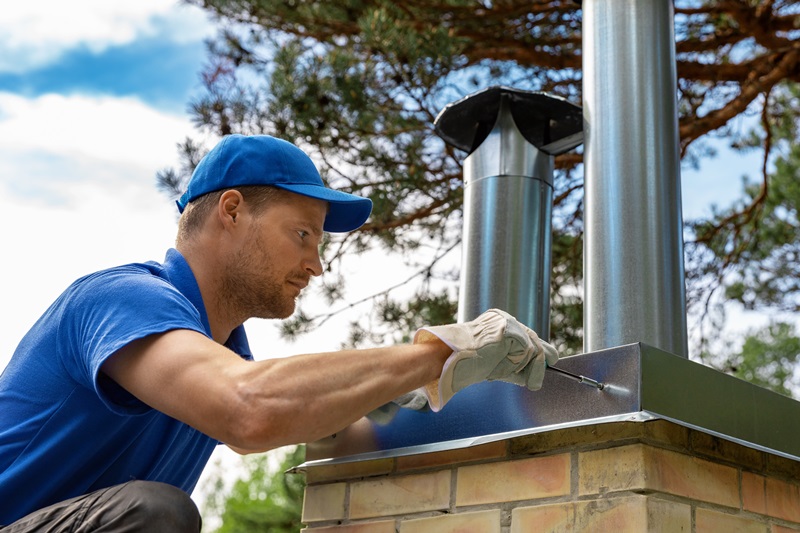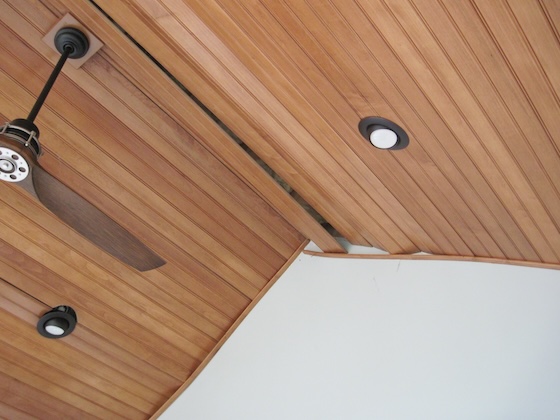
worker on the roof installing tin cap on the brick chimney
Understanding the Causes of Moisture Damage in Chimneys
The Importance of Waterproofing Your Chimney
Waterproofing your chimney is an essential step in protecting your home from moisture damage. Chimneys are constantly exposed to the elements, and over time, water can seep into the masonry and cause serious structural issues. Waterproofing your chimney helps prevent these problems by creating a barrier between the brickwork and any moisture that may come in contact with it.
One of the main benefits of waterproofing your chimney is that it can extend its lifespan. By preventing water from penetrating the masonry, you reduce the risk of cracks, spalling, and other forms of deterioration that can occur over time. This means you’ll be able to enjoy a safe and functional fireplace for many years to come.
Another important reason to waterproof your chimney is that it helps protect against mold growth. When moisture enters your chimney’s masonry, it creates an ideal environment for mold spores to thrive. Not only does this pose health risks for you and your family but also affects air quality inside your house. Waterproofing ensures that no excess moisture gets trapped within the walls or ceilings surrounding the hearth area which could lead to such problems later on.
Overall, investing in professional waterproofing services or DIY solutions will help ensure that your chimney stays dry year-round – even during heavy rains or snowstorms – so you won’t have to worry about costly repairs down-the-line due to dampness-related damages caused by weather conditions or natural wear-and-tear over time without proper maintenance measures taken beforehand!
Signs of Water Damage in Your Chimney
Water damage in your chimney can be a serious problem that requires immediate attention. Some common signs of water damage include discoloration or staining on the interior walls of your chimney, rusted metal components such as the damper or firebox, and a musty odor coming from your fireplace.
If you notice any of these symptoms, it’s important to have your chimney inspected by a professional. They will be able to identify the source of the water intrusion and recommend appropriate repairs or waterproofing solutions.
Ignoring water damage in your chimney can lead to more serious issues down the line, such as mold growth or structural damage. So if you suspect that there may be moisture problems in your chimney, don’t delay – contact a professional today.
Different Types of Chimney Waterproofing Solutions
One of the most common types of chimney waterproofing solutions is a water repellent. This solution is applied to the exterior masonry surface of the chimney and helps prevent moisture from seeping into the bricks or mortar joints. Water repellents can be either silicone-based or silane/siloxane-based, with each type offering different benefits.
Another option for waterproofing your chimney is through a membrane system. These systems involve applying a rubberized coating over the entire surface of the chimney, creating a barrier that prevents water from penetrating into any cracks or crevices. Membrane systems are often used in areas with heavy rainfall or where there may be significant exposure to harsh weather conditions.
Finally, some homeowners opt for an internal sealant as their preferred method of waterproofing their chimneys. This involves applying a material such as sodium silicate inside the flue lining itself, which then hardens and creates an impermeable layer that prevents moisture from entering through small gaps or holes in the liner. While this method can be effective at preventing water damage, it’s important to note that internal sealants should only be applied by chimney experts who have experience working on chimneys.
DIY Chimney Waterproofing: Pros and Cons
Chimney waterproofing is a crucial aspect of maintaining your chimney’s structural integrity. You can either hire a professional service or opt for DIY solutions. While DIY chimney waterproofing may seem like an easy and cost-effective option, it comes with its own set of pros and cons.
One advantage of opting for DIY chimney waterproofing is that you can save money on labor costs. Additionally, you have the flexibility to choose from various materials available in the market to suit your budget and preferences. However, if you are not experienced in this field, there is a risk of making mistakes that can lead to further damage to your chimney.
Another disadvantage of DIY chimney waterproofing is that it requires time and effort on your part. The process involves cleaning the surface thoroughly before applying any sealant or coating material. Moreover, you need to ensure that all gaps and cracks are sealed completely; otherwise, moisture will seep through them eventually.
In conclusion, while DIY chimney waterproofing may seem like an attractive option due to its cost-effectiveness and flexibility in terms of material choice, it also requires expertise and attention to detail. If done incorrectly, it could lead to more significant problems down the line. Therefore, consider hiring a professional service if you’re unsure about tackling this task yourself or lack experience in this area altogether.
Hiring a Professional Chimney Waterproofing Service: What to Look for
When hiring a professional chimney waterproofing service, it is important to look for a company with experience and expertise in the field. Look for companies that have been in business for several years and have a solid reputation within your local community. Additionally, make sure that the company you choose has all of the necessary licenses and insurance policies required by your state or municipality.
Another factor to consider when choosing a professional chimney waterproofing service is their pricing structure. While you don’t want to sacrifice quality for price, you also don’t want to be overcharged for services that could be completed at a more reasonable cost. Be sure to get quotes from multiple companies before making your final decision.
Finally, consider the level of customer service provided by each potential company. Do they respond promptly to inquiries? Are they willing to answer any questions or concerns you may have about their services? A good chimney waterproofing service will prioritize clear communication with their clients throughout every step of the process.
The Cost of Chimney Waterproofing: Factors to Consider
When considering the cost of chimney waterproofing, there are several factors to take into account. The size and condition of your chimney will play a significant role in determining the overall cost. A larger or more damaged chimney may require more materials and labor, resulting in a higher price tag.
Another factor to consider is the type of waterproofing solution you choose. Different products have varying levels of effectiveness and durability, which can affect their price point. It’s important to do your research and select a product that fits both your budget and your needs.
Lastly, it’s essential to factor in the cost of hiring a professional versus doing it yourself. While DIY solutions may seem cheaper upfront, they can end up costing more if done improperly or if further damage occurs due to inadequate protection against moisture. Hiring an experienced professional ensures quality workmanship and long-lasting results but comes with a higher price tag than attempting it on your own.
Maintaining Your Chimney Waterproofing System
Regular maintenance is crucial to ensure that your chimney waterproofing system remains effective. It is recommended to inspect your chimney at least once a year, preferably before the rainy season begins. Look for any signs of damage or wear and tear on the waterproofing material, such as cracks or peeling. If you notice any issues, it’s best to address them promptly before they worsen.
Cleaning your chimney regularly can also help maintain its waterproofing system. Debris like leaves and twigs can accumulate in the gutters and downspouts around your roofline, causing water to pool near your chimney. This can lead to moisture damage over time if left unaddressed. Regular cleaning of these areas will help prevent this from happening.
Another important aspect of maintaining your chimney waterproofing system is ensuring proper ventilation in your attic space. Poor ventilation can cause excess humidity levels which may lead to condensation forming on the inside of chimneys walls leading towards dampness and mold growth over time – both factors that contribute significantly towards moisture damage in chimneys! Make sure that air flows freely through vents or windows throughout the house so as not only provide an escape route for humid air but also keep things dry during wetter seasons too!
How Often Should You Reapply Chimney Waterproofing?
Chimney waterproofing is an essential aspect of maintaining your chimney’s integrity and preventing moisture damage. However, the frequency at which you need to reapply it can vary depending on several factors. Generally, it is recommended to apply a new coat of waterproofing every five years or so.
The frequency of reapplication may depend on the type of waterproofing solution used initially. Some solutions may require more frequent application than others. Additionally, if your chimney is exposed to harsh weather conditions such as heavy rain or snowfall, you may need to reapply the coating more often.
Regular inspections and maintenance can also help determine when it’s time for a new coat of waterproofing. If you notice any signs of water damage such as discoloration or dampness around the fireplace area, it could be an indication that your chimney needs attention. In such cases, it’s best to consult with a professional chimney service provider who can assess the situation and recommend appropriate measures.
Overall, regular inspection and maintenance are key in determining when you should reapply chimney waterproofing. By taking proactive measures and addressing issues promptly, you can ensure that your hearth remains protected from moisture damage for many years to come.
Other Ways to Protect Your Hearth from Moisture Damage
One effective way to protect your hearth from moisture damage is by installing a chimney cap. A chimney cap is a metal cover that fits over the top of your chimney, preventing rainwater and debris from entering. It also helps prevent animals such as birds and squirrels from nesting in your chimney.
Another way to protect your hearth is by ensuring proper ventilation in the room where it is located. Moisture can build up in poorly ventilated areas, leading to mold growth and other issues. Installing an exhaust fan or opening windows can help circulate air and reduce humidity levels.
Finally, regular maintenance of both your roof and gutters can go a long way in preventing moisture damage to your fireplace. Clogged gutters can cause water to overflow onto the roof and seep into the chimney, while damaged shingles or flashing can allow water to penetrate through gaps into the attic space below. By keeping these areas well-maintained, you can help ensure that water stays out of your home’s interior spaces including its hearth area.
Chimney Waterproofing: Shielding Your Hearth from Moisture Damage was first seen on https://chimneysweeplosangeles.net/





More Stories
The Role of Chimney Inspections in Homebuying
The Rise of Bed Bugs: Why Are They Making a Comeback?
Chimney Masonry Repair 101: Restoring Beauty and Functionality